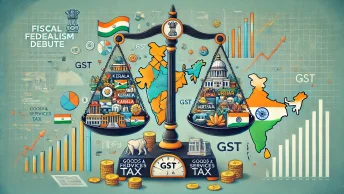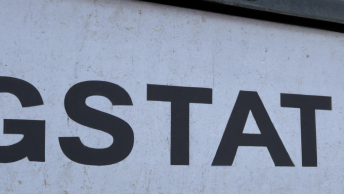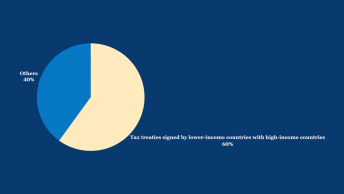Nia Doshi is a fourth year law student at NALSAR University of Law, having interest in taxation and labour law, focusing on the legal and economic implications of gig platforms.
Since their inception, Ola and Uber have been at the centre of numerous controversies, particularly concerning whether their drivers should be classified as employees or independent contractors. While this debate remains unresolved in India, recent rulings in countries like the UK have classified drivers as “workers,” a category that grants them rights such as minimum wage and holiday pay, without fully treating them as employees. This distinction is crucial, as it acknowledges the unique nature of gig work while providing a safety net for workers.
In India, however, the classification debate is still evolving, especially with the new labour codes aiming to recognize gig and platform workers, though not fully granting them the protections available to traditional employees. Ola and Uber’s shift from a traditional aggregator model to a subscription-based model further complicates this debate. While it reinforces the notion of drivers as independent contractors, it simultaneously raises important questions about their tax obligations under the Goods and Services Tax (GST) regime.
This shift from labour law concerns to tax implications is crucial because how drivers are classified affects the platforms’ responsibilities under GST. Recently, Ola and Uber have approached GST authorities for clarity on their tax obligations under this new model, following contrasting rulings involving similar platforms. This article will focus on the tax implications of this transition, analysing relevant Indian case law and exploring what the potential outcomes of these rulings could mean for the future of ride-hailing platforms.
Understanding the Basic Transition from Aggregation to Subscription
To properly assess the tax implications, it is essential to distinguish between the traditional aggregator model, which companies like Ola and Uber have utilized until now, and the new subscription-based model they intend to implement.
In the traditional aggregator model, drivers leverage the aggregator’s platform to offer transportation services to passengers, with the aggregator primarily acting as a facilitator and coordinator. The relationship between drivers and aggregators is based on a principal-to-principal arrangement, where drivers provide transportation services to the aggregator’s customers using the platform. This model typically operates on a commission-based structure, where the aggregator retains a portion of each fare as commission, with the remainder going to the driver. What is noteworthy is that in this model, the drivers are the service providers to the aggregator – in this case, uber or ola.
In the new subscription model, the companies will charge drivers a daily or weekly subscription fee to be listed on the platform and accessible to customers seeking rides. The aggregator’s responsibility will be limited to connecting drivers with potential customers, without any involvement in the actual provision of transportation services. Drivers will take full responsibility for delivering these services, and payments will be made directly to them by the customers. The drivers will also no longer have to pay a cut to the companies. Therefore, in stark contrast to the previous model, Ola and Uber have positioned this model as a “Software as a Service (SaaS)” model wherein these companies are now the service providers and the drivers are now independent and are the recipients of the said service.
This shift in operational structure brings significant changes to how these entities are classified and taxed under the GST regime, necessitating a closer examination of the taxation implications for both the companies and the drivers.
Legal Definitions and Interpretations
Section 2(45) of the Central Goods and Services Tax Act (CGST Act) defines an Electronic Commerce Operator (ECO) as “any person who owns, operates, or manages a digital or electronic facility or platform for electronic commerce.” This broad definition encompasses entities that facilitate transactions through digital platforms.
Section 9(5) of the CGST Act grants the government the authority to specify, via notification, certain intra-state services for which the tax liability falls upon the e-commerce operator if these services are supplied through their platform. Specifically, the government has notified that for services involving the transportation of passengers via radio-taxi, motorcab, maxicab, or any other motor vehicle, the tax on intra-state supplies is to be paid by the e-commerce operator as though these services are provided directly by the operator.
Ola and Uber fall under this notification. Under the traditional aggregator model, they were subject to GST at two distinct levels. Firstly, for the passenger transport services provided by drivers, GST was payable on a reverse charge basis. This is because the aggregator, being the recipient of the transportation service from the driver, was mandated under Section 9(5) to remit tax as though the service was provided ‘through’ it. Secondly, GST was also levied on the commission that the aggregator received from the drivers for each trip.
With the transition to a subscription-based model, the nature of the relationship between the entities involved changes significantly. Under this new model, there are now two distinct levels of service provision itself. The first level involves the provision of Software as a Service (SaaS) by the company, such as Uber or Ola, to drivers, facilitating their connection with passengers. The second level pertains to the drivers providing transportation services to the end passengers. According to the claims of these passenger transport service companies, the transportation service provided by the driver to the passenger is considered separate from the contract between the driver and the company. Therefore, under this model, the aggregator would only be liable to pay GST on the subscription fees collected from the drivers. The GST obligations related to the transportation services and fare setting between drivers and passengers would be treated as completely separate and independent transactions.
However, despite the shift in business models, these companies remain categorized as e-commerce suppliers, raising legal challenges regarding whether the services—whether under the traditional aggregator model or the new subscription model—are provided “through” their platforms. The following section will examine two pivotal court rulings that have prompted Uber and Ola to seek clarity from GST authorities regarding their tax obligations.
Navigating Contradictions: Court Rulings, SaaS Classification, and OIDAR Implications.
The decision in the case of Juspay Technologies before the Authority for Advance Ruling (AAR), Karnataka, was pivotal in shaping the interpretation of what constitutes the provision of passenger transport services “through” an e-commerce operator. The applicant in this case was the entity operating the Namma Yatri app, which connected auto drivers with passengers through a model strikingly similar to the one currently proposed by Uber and Ola. The company collected a subscription fee from the drivers and asserted that it exerted no control over the actual provision of transportation services between the driver and the end passenger. According to the terms and conditions between the drivers and the applicant, the applicant had no authority over the quality of service or the remuneration; its role was limited to initiating contact between the driver and the passenger.
This case was the first to raise the question of how the term “through” should be interpreted within the context of an e-commerce operator’s involvement. The court emphasized the ordinary dictionary meaning of “through,” concluding that it required the e-commerce operator to act as an intermediary or agent for the driver from the initiation to the completion of the transportation service. The court found that such intermediary control was absent in this instance, determining that the services were not provided “through” the e-commerce operator. As a result, the e-commerce operator was not subject to the GST obligations typically associated with such service provisions.
In a more recent ruling, the same Authority for Advance Ruling (AAR) in Karnataka further elucidated the meaning of the term “through” in the context of Section 9(5) of the Central Goods and Services Tax (CGST) Act. The case involved Roppen Transportation Services, which provided technology-based services to passengers for booking rides with independent drivers through the Rapido app and also proposed offering these services to independent cab providers on a subscription basis—again, a model closely resembling the one proposed by Ola and Uber.
In contrast to the earlier Juspay Technologies decision, the AAR found that Roppen Transportation Services fell within the definition of an e-commerce operator, with the service being provided “through” their platform, thus making the company liable to pay GST as if it were the direct service provider, rather than the independent drivers.
Though the facts of the Juspay and Roppen cases appear prima facie similar, a deeper analysis reveals an emerging test centered on the level of control exercised by the e-commerce operator over the service provided through its platform. In the Juspay case, involving the Namma Yatri app, the court noted that the applicant did not monitor the rides, did not determine or collect fares, and was not responsible for any deficiencies in the driver’s service to the passenger. The app merely facilitated the initial contact between the driver and passenger, without engaging in any substantive way in the service’s execution. Consequently, the court ruled that the service was not provided “through” the app, and the e-commerce operator was not subject to GST.
In contrast, the court in the Roppen case found that the Rapido app did more than just initiate contact between drivers and passengers. The app facilitated fare negotiations, notified passengers when drivers arrived and when trips concluded, displayed routes, and proposed a pay-per-use ride monitoring system that included ride tracking, SOS alerts, and customer support. These activities, the court held, constituted the supply of services “through” the e-commerce operator, as they involved a continuous engagement from initiation to conclusion of ride.
Therefore, a subtle test involving the level of control exercised by the ecommerce operator during the initiation, continuation and conclusion of the ride is emerging through these cases as the determining factor in assessing GST liability, regardless of the business model used by passenger transport service companies. Furthermore, Uber and Ola, which are regulated by the Motor Vehicle Aggregator Guidelines, 2020, exercise significant control over their platforms. These guidelines require them to verify drivers’ identities with the police, ensure vehicles are equipped with safety measures such as GPS and fire extinguishers, and impose penalties for guideline violations. Additionally, Uber and Ola utilize digital wallets for direct payment through their platforms, further indicating their control over the entire service process.
Thus, even under a subscription model where drivers pay a fee to the e-commerce operator and the platform claims no involvement in the service itself, the level of control exerted by these companies likely subjects them to GST obligations. Avoiding such liability would necessitate relinquishing these controls, which could undermine ride safety and ultimately dissuade passengers from using the service.
The last implication of this shift to the subscription model and the Software-as-a-Service model adopted by these platforms subjects them to the regulations governing Online Information Database Access or Retrieval Services (OIDAR). Consequently, if the recipient i.e., the driver is registered under GST, Ola or Uber will be obligated to pay GST on a forward charge basis, meaning the tax is directly charged to them as the service provider. However, even when the driver is a ‘non-taxable’ person, i.e., unregistered under the GST Act, the responsibility to pay GST still falls on the service provider. This means that the platform cannot avoid tax obligations by providing services to unregistered drivers, ensuring that their role as facilitators of digital services remains taxable, irrespective of the driver’s registration status.
The Way Forward
As GST authorities assess Ola and Uber’s shift to a subscription-based model, it is essential to ensure that this model is not used to reduce their GST liabilities. The emerging test of control, which examines the level of involvement platforms have in key aspects like ride initiation, fare management etc., should guide this assessment. Even under the subscription model, Ola and Uber still exercise significant control over these areas, which suggests that they cannot fully escape GST obligations. Moreover, the transition complicates labour issues, as classifying drivers as independent contractors leaves them without adequate protection under the existing labour law framework.
Regulators must adopt a coordinated approach like defining the level of control that necessitates tax liabilities and ensuring platforms are taxed uniformly while protecting the drivers’ rights. By doing so, India can create a regulatory environment that upholds both tax fairness and worker protections in the growing gig economy.
rtp slot






